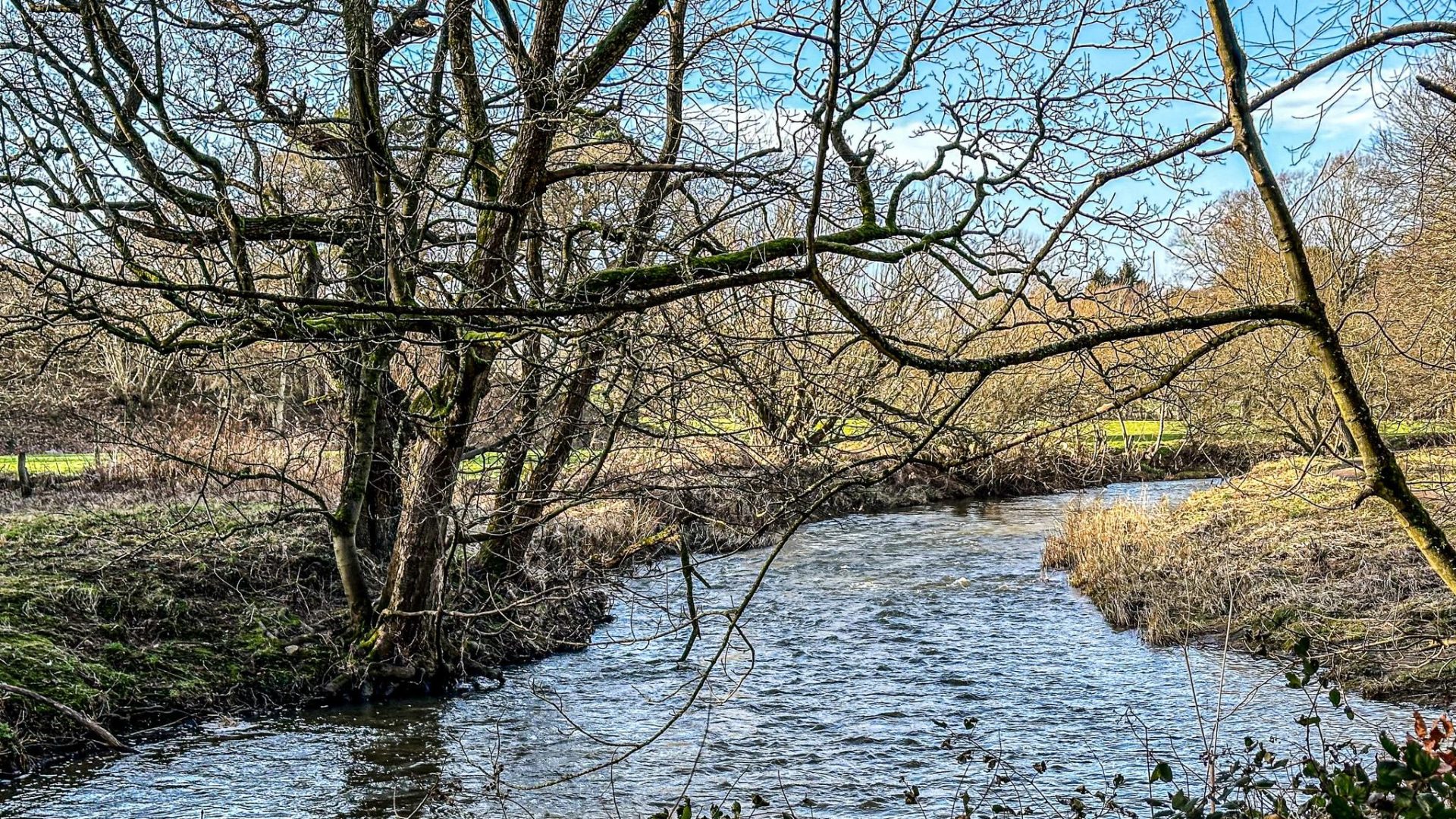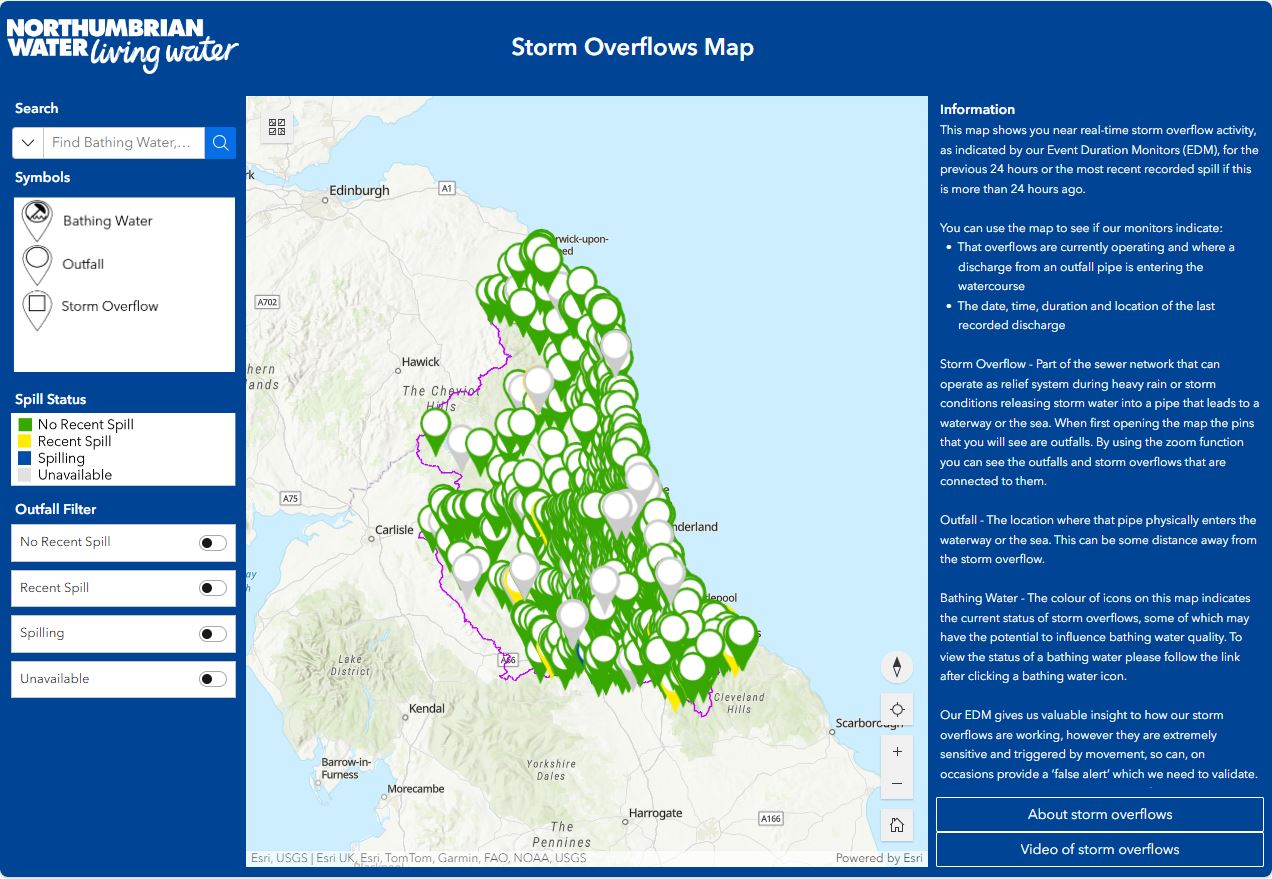Northumbrian Water has launched an interactive digital map to show people up-to-date information on Storm Overflows across the North East.
Members of the public are invited to use the Storm Overflow map to make informed choices about how they use their local rivers and coastal waters.
The new online map will clearly show the location of all Storm Overflows and outfalls in Northumbrian Water’s operating area.
It will provide customers and water users with key information like when and where there are real time Storm Overflows operating and where the most recent discharges have occurred.
The map is fed by data from sensor monitors which are attached to each overflow, meaning the information is as near to real time as possible, ensuring that people have the most up-to-date information about their local area.
The launch of this new digital map marks a significant step forward in the sharing of data and information with customers and the community which has never been available before.
The Storm Overflows map has been built and developed with the help of environmental partners from across the region including the Tyne Rivers Trust, Tees Valley Nature Partnership and Wear Rivers Trust.
Richard Warneford, Wastewater Director at Northumbrian Water, said:
“Being transparent and open about how our storm overflows operate is something we have done for our coastal waters for many years.
“As part of the Cleaner Seas Forum, we have been taking part in a voluntary trial to notify Surfers Against Sewage and Beach Controllers when we discharge to a beach. This began with Saltburn Bathing Water in 2011, but this is the first time we can show our customers and all water users our entire wastewater network in one place in real time.
“What we’ve built will allow our customers to see what is happening, and where, and with 100% of our storm overflows monitored, it gives people a transparent view. That means people can see and fully understand where Storm Overflows are operating, so they can make informed choices about how and when they use their local rivers and coastal waters.
“We are committed to working harder and faster to reduce our reliance on Storm Overflows and their impact on our environment and that’s why behind this map is an ambitious investment programme, which will see us investing more than £1.7bn to improve the environment.
“It’s also backed by a pledge to eliminate serious pollution events and deliver a 30% reduction in all pollution incidents preventing sewage from entering our rivers, waterways and seas.
“With the combined system we currently have across the country, Storm Overflows are essential at times of heavy rainfall to protect customers’ homes from flooding, which we know is a devastating experience and one that we work hard to avoid.
“We’re pleased we’ve seen progress in this area, we have reduced internal flooding by 66% in the past three years (2020-2023) and because it’s so important to our customers we will continue to make this area a priority in the future.
“This new map also completes one of our nine pledges that we’ve committed to delivering for our rivers and coasts. Our ultimate aim is to use the planning system, innovative technology and our investment programmes including nature based solutions to reduce the impact of heavy rainfall on our sewer system, so that these ‘pressure release valves’ are needed far less.
“We’re working towards that end as quickly as possible and the Storm Overflow map is an extremely positive step in the right direction in helping us all to understand and manage this complex issue.”
Rachel Murtagh, Tees Valley Nature Partnership, commented:
“It’s great to see Northumbrian Water are being proactive by creating a resource for anyone to use to help them monitor their local water quality whether it be for recreation or concern for the environment.”
“The map is easy to use and gives a fascinating glimpse of the network of pipes and storm outlets into rivers and streams across our region. Hopefully the planned investment to the network will result in significantly reduced pollution helping the work of partners to in the much-needed recovery of our precious nature.”




